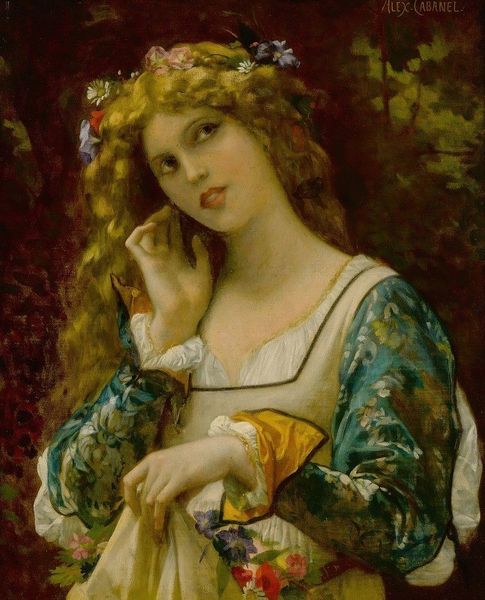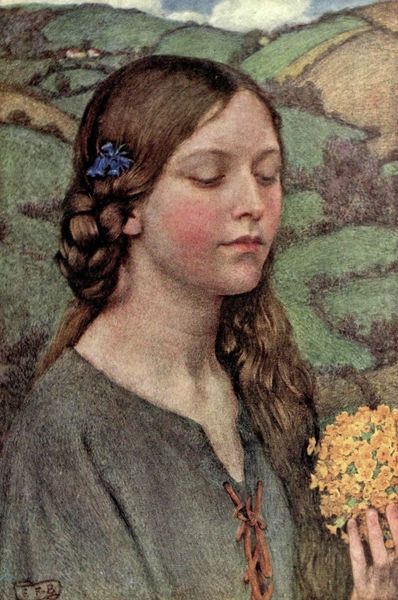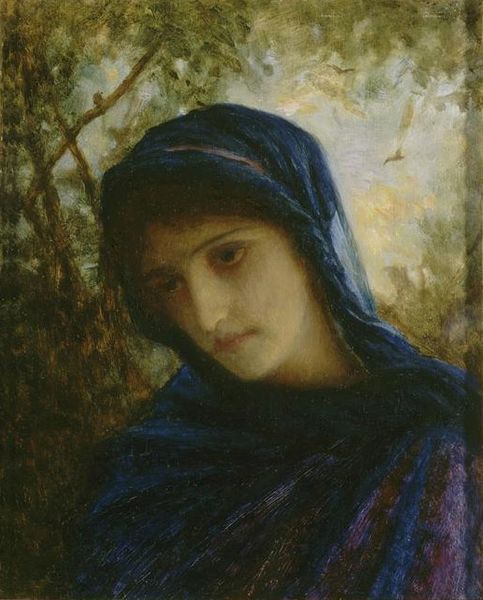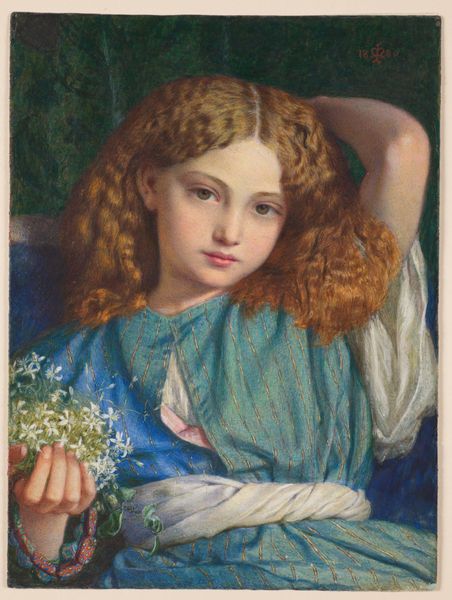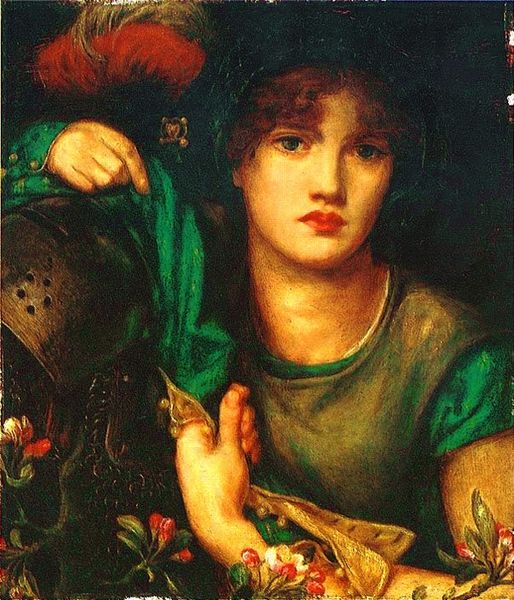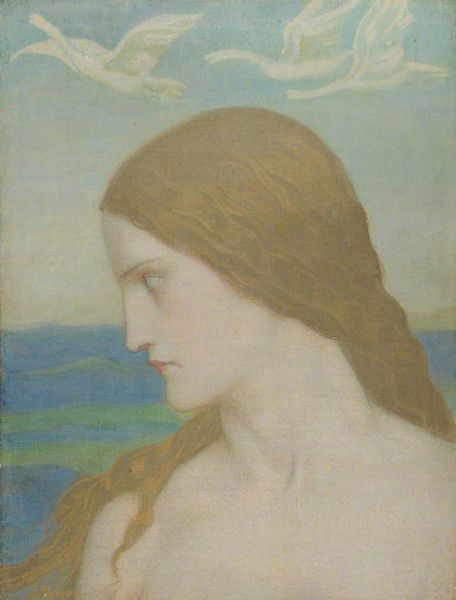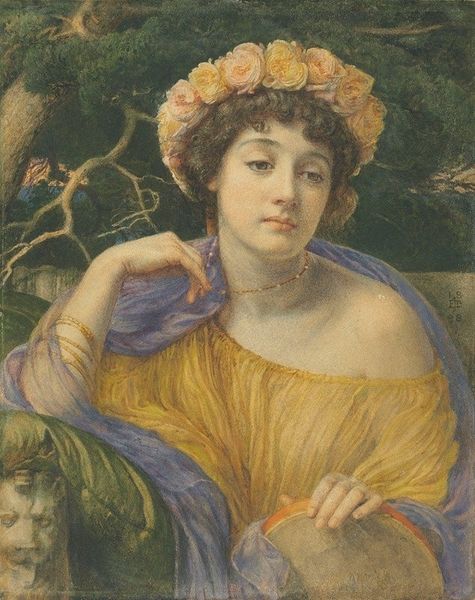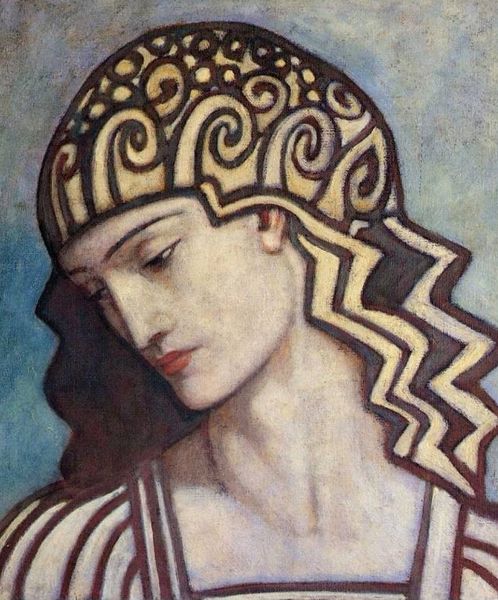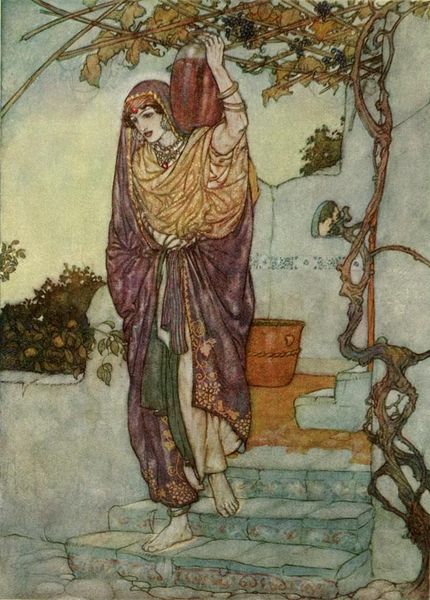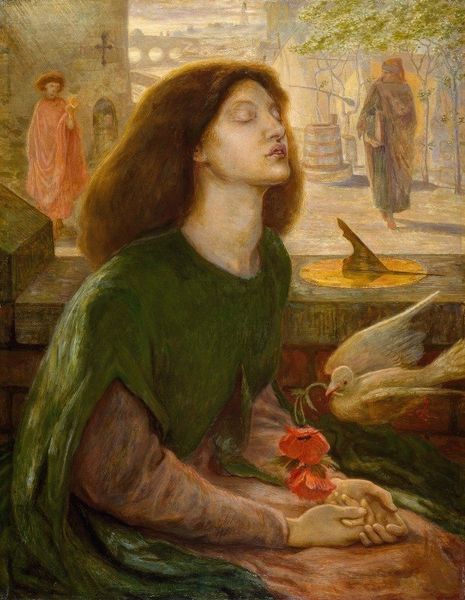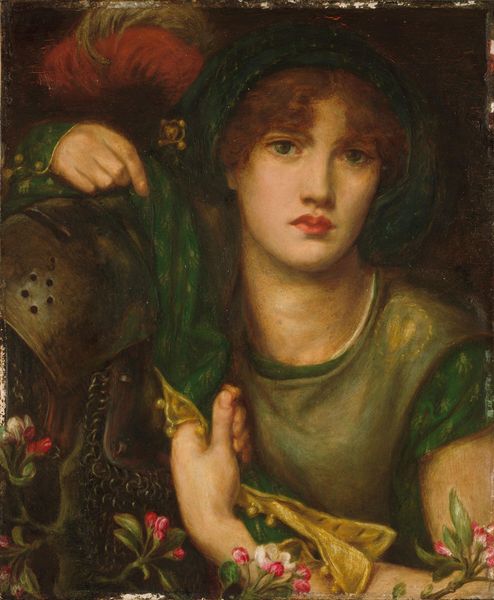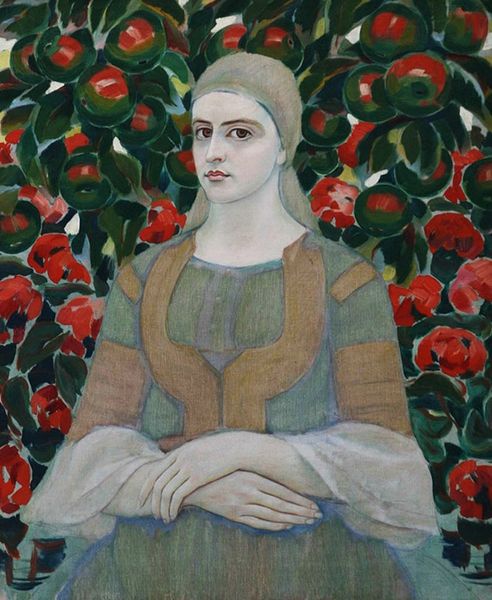
oil-paint
#
portrait
#
narrative-art
#
oil-paint
#
landscape
#
figuration
#
oil painting
#
symbolism
#
portrait art
Copyright: Public domain
Curator: Here we have John Duncan’s "The Messenger of Tethra," completed in 1910. It's an oil painting blending portraiture with landscape, steeped in Celtic symbolism. Editor: My immediate feeling is one of cool serenity. The predominantly blue palette and the woman's composed expression give off a very tranquil vibe, even though there’s something unsettling about her gaze. Curator: It's fascinating to see Duncan engaging with the Celtic Revival through Tethra, a figure from Irish mythology—king of the dead, ruler of an underworld realm. His messengers often blur the boundaries between worlds, life, and death. Editor: Exactly, and her detached stare really drives that home. She isn't necessarily inviting or warm, it's a compelling distance. Plus, the way she holds that branch with the birds - is she offering a gift, or perhaps delivering a warning? Curator: Duncan was deeply invested in creating a visual language that echoed ancient Celtic beliefs and folklore. His connections with figures like Patrick Geddes situated his art within broader conversations about cultural identity and nationhood at the time. Editor: And consider the symbolism embedded in this figure: her jeweled crown suggesting status, and the birds, which could represent souls or messages, poised to fly between worlds. It reflects not just Celtic themes but also a widespread interest in spiritualism present around the turn of the century. It makes me wonder what role gender played in articulating mystical experiences at the time, especially within esoteric circles? Curator: That's an important question, highlighting how artistic interpretations intersect with gendered and esoteric views on the human relationship to the supernatural. Duncan's circle greatly influenced the artistic styles and themes found throughout his work. Editor: Thinking about our present moment, what resonances might this piece evoke for audiences today? A connection to ancestors, or maybe questioning conventional social norms about death and spirituality? Curator: Well, thinking about art's function beyond aesthetics and exploring social commentary might empower folks to question traditional norms around folklore and storytelling, too. Editor: I find that, even with its historical roots, this messenger poses compelling questions about the spaces between what is visible and invisible, understood and questioned, even now. Curator: Precisely. This allows us to view both the cultural and historical significance of Duncan’s rendering.
Comments
No comments
Be the first to comment and join the conversation on the ultimate creative platform.
